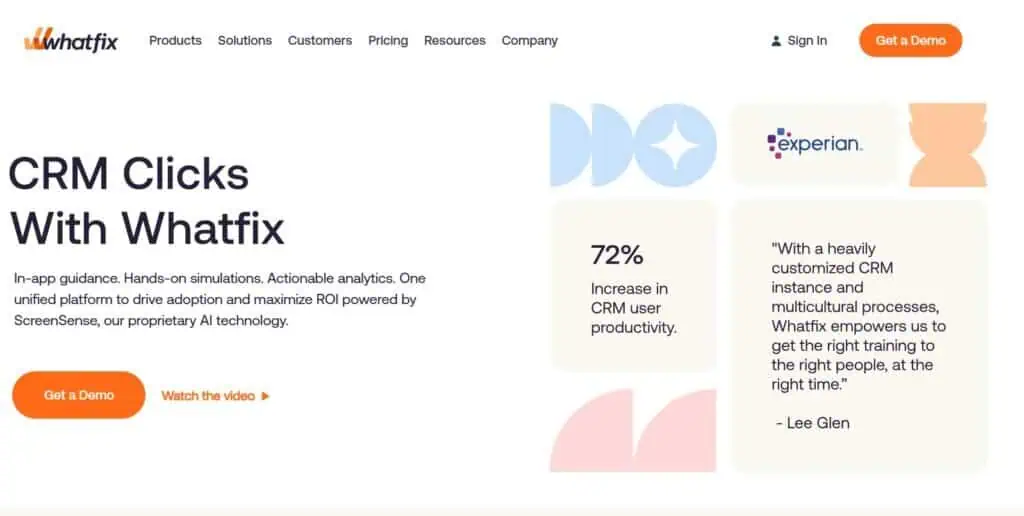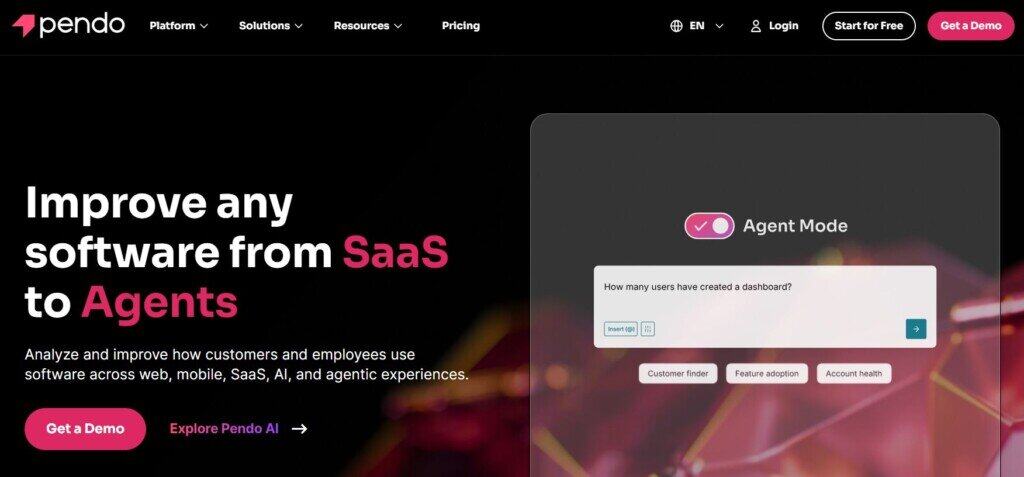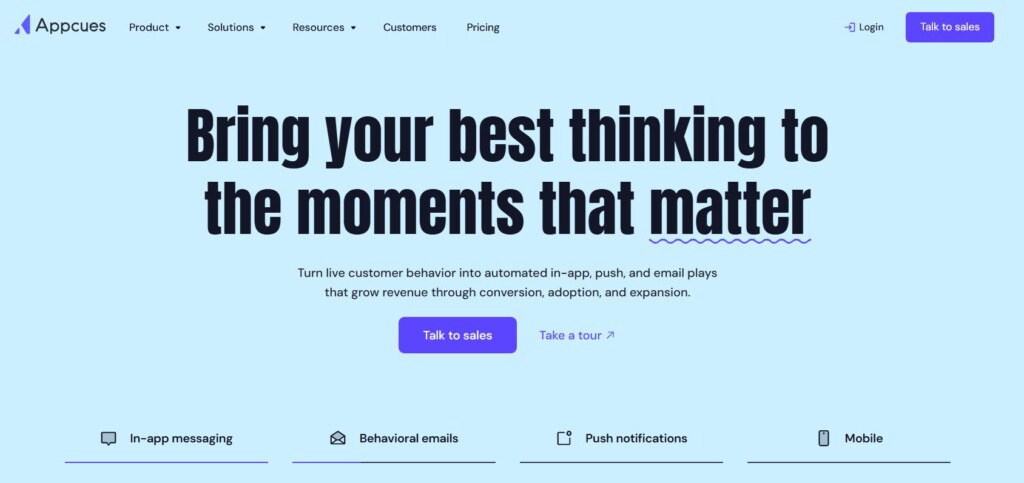Last Updated on November 13, 2025 by Ewen Finser
WalkMe is a leading digital adoption platform that’s used to teach team members how to use enterprise software. With step-by-step walkthroughs that provide real-time assistance, it offers a suite of features to facilitate adoption, automate tasks, and analyze user engagement.
However, it’s very much an enterprise tool. It’s a major investment with a steep learning curve, and unless you have multiple teams that need help with employee onboarding, software training, and workflow automation, WalkMe is probably going to be overkill for your needs.
It’s also expensive. While it’s custom-quoted, anecdotal evidence suggests that it will set you back around $2.40 per month per user — not per creator, but anyone who actually interacts with the platform. To make matters worse, this per-user rate apparently increases for smaller teams.
So if you want something more lightweight, what are your options?
1. Guidde
Guidde is not a one-to-one equivalent to WalkMe, but I believe it offers more straightforward value for small to medium businesses.
Instead of building click-through guides, Guidde is meant for creating video tutorials. You simply record your screen while you’re executing a workflow, and the platform uses AI to turn it into a polished video guide (complete with annotations and voiceover). The process is quick and painless, and the platform’s in-app editing tools are comprehensive — it’s easy to edit out mistakes, blur sensitive info, and even add transitions and background music.
The platform also serves as a central library for your team’s process documentation, with videos able to be organized, tagged, and shared via links.

Pros
- Ease of use: There’s really not much of a learning curve here. Even if you’re not tech-fluent, you shouldn’t have too much trouble with Guidde.
- Affordability: This factor really separates Guidde from WalkMe and other similar platforms. There’s a free tier that works well for light use, and its Pro and Business plans are $16/creator/month and $35/creator/month, respectively.
- Support and onboarding: Guidde especially shines here. You’ll get all the help you need during the setup process, and support staff are always on hand to address any bugs that crop up.
- Lightweight implementation: Guidde runs as a lightweight cloud app and uses a Chrome extension for recording. This means you can start creating content immediately without involving your IT department.
Cons
- Video-only tutorials: Guidde is restricted to making video guides only, so it’s not going to provide the same level of interactivity as WalkMe.
- Evolving feature set: Guidde is a young company that’s determined to rapidly roll out new features. Expect some growing pains with new functionalities every now and then.
2. Whatfix
Whatfix is often seen as WalkMe’s closest competitor in terms of functionality. It’s a similar (albeit more lightweight) digital adoption platform that overlays on your applications to provide in-app guidance, self-help menus, and user analytics.
Whatfix is cheaper and easier to implement than WalkMe, but its feature set is notably more limited. It does, however, include a robust onboarding assistant and valuable add-ons like a self-help knowledge base widget.

Pros
- Balance and scalability: Offers core DAP features without the excessive complexity of something like WalkMe. It’s powerful enough for an enterprise setting but still relatively straightforward to implement.
- Strong customer support: Whatfix boasts high G2 and Capterra scores in categories like quality of support and ease of setup. So if you have an issue, you’ll be able to get help easily enough.
- Suitability for larger organizations: Although it’s not as powerful a tool as WalkMe, Whatfix has proven to be popular among enterprise customers. Earlier this year, it announced a partnership with the US Army to support the implementation of a new pay module that would serve 1.1 million servicemembers.
Cons
- Pricing: Whatfix has custom pricing, and while it’s generally understood to be more affordable than WalkMe, it’s still enterprise software and will be inaccessible to the average SMB.
- Steep learning curve: Whatfix is a large platform with a rich feature set, which can initially be daunting and come with a steep learning curve. It’s more straightforward than WalkMe, but if you don’t need a tool this powerful, it might not be worth it.
- Separate analytics product: Not every company will need it, but unlike with similar platforms, WhatFix’s product analytics module is a separate product (with an additional cost). Out-of-the-box Whatfix does offer basic analytics on flow usage, but it’s very limited.
3. Pendo
Pendo started life as a product analytics and feedback platform before it eventually added in-app guides. As such, it’s not as established or capable as similar tools, but it’s still gaining a lot of ground as a serious competitor — especially among clients that place a lot of value in data and analytics.

Pros
- All-in-one insights and guidance: The biggest selling point for Pendo is that it combines analytics, user feedback, and in-app guidance in one platform.
- AI-integrated analytics: Pendo has been putting AI to good use over the last few years. For example, it’s capable of automatically categorizing feedback themes and summarizing user sentiment — tasks that otherwise demand a lot of manual analysis. If gaining a deeper understanding of user behavior is your priority, there’s a lot to like here.
- Web and mobile apps: Pendo is available as both a cloud app and a mobile experience.
Cons
- High cost: Like other digital adoption platforms, Pendo keeps its cards close to its chest with pricing. Again, though, reports suggest that its custom tiers work out to be pretty expensive, especially for smaller teams. Expect to set aside a five-figure sum to maintain your annual subscription.
- Gated critical features: A lot of Pendo’s most useful features (including certain analytics, longer-lasting data retention, and some guide types) only come in its Enterprise tier or as optional add-ons. So there’s a good chance you’ll feel short-changed if you go with a lower tier.
- Steep learning curve: Like with many other DAP offerings, Pendo comes with a lot of bells and whistles (even if many of them are reserved for higher-paying customers). Unfortunately, not all of these are intuitive for new users, and getting up to speed with all of them can take time.
- Clunky guide-builder: Compared to specialized onboarding tools, Pendo’s guide-builder can feel a bit awkward. Expect glitches, especially if you’re going to use it for more complex workflows involving multiple apps.
4. Appcues
Appcues is an up-and-coming no-code offering that’s a little more limited in scope but is quite easy to use. With just a point-and-click, drag-and-drop web app, you can easily get started with measuring and improving product adoption. Especially among mid-market SaaS companies, Appcues is becoming increasingly popular as a WalkMe alternative that’s easier to use and more affordable.

Pros
- Suitability for onboarding and adoption: The Appcues toolkit is really effective for user onboarding and feature adoption. I’m a big fan of how it allows for announcements and the collection of survey responses in-app.
- Drag-and-drop customization: Appcues makes customization easy — you won’t need to be a UX expert to make useful guides with it.
- Regular updates: Appcues is regularly updated with new features and improvements. For example, it recently added an AI assistant and a range of new widget types.
- Mid-tier pricing: Appcues isn’t cheap, but it’s generally more affordable than WalkMe or Pendo for smaller volumes. There’s no free tier, but its Start and Grow plans will both provide lower entry points than you’ll get with some competitors.
Cons
- Limited scope: Appcues is fantastic for onboarding and simple guidance, but it doesn’t offer the more complex automations or workflow integrations that you’ll get with tools like WalkMe. What’s more, its guidance is mainly restricted to onboarding rather than full ongoing training or process automation.
- Basic analytics: Appcues’ built-in analytics and reporting are both somewhat limited. If data analysis is important to you, you might have to pair the platform with yet another tool.
- Performance quirks: Some parts of Appcues can move slowly when you’re working with a lot of data, and bugs are also relatively common.
Choosing the Best WalkMe Alternative for Your Needs
Digital adoption platforms are heavy, expensive tools. If you really need an enterprise solution, you could get a lot of value from the likes of Whatfix. But I just don’t think this kind of software is really necessary for most use cases.
Guidde provides a much more user-friendly, cost-effective solution for nimbler companies. In truth, you’re not losing out on much when it comes to interactivity; Guidde’s automated guides are robust enough to accompany teams through most software processes (even complex ones). Unless you truly need the advanced feature sets that come with enterprise DAPs, I believe Guidde is the better option.

